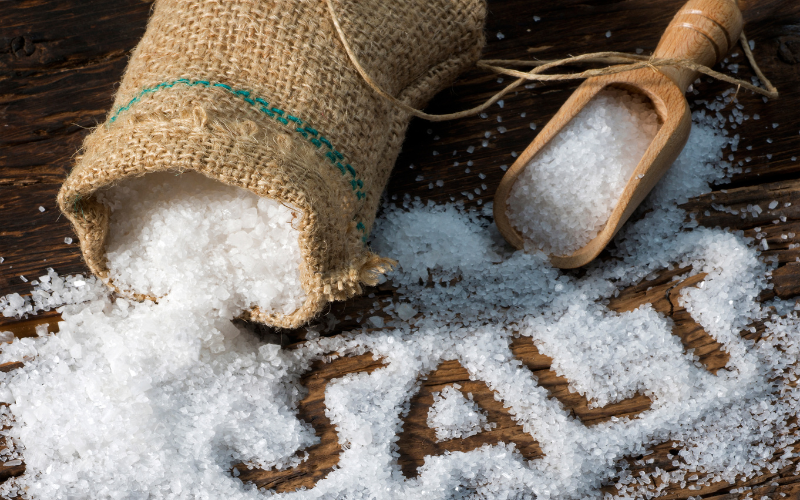Introduction
Salt, a mineral composed primarily of sodium chloride, has been a valuable commodity throughout history, used for various purposes including preservation, seasoning, and even as a form of currency. Today, the salt industry continues to thrive, offering numerous opportunities for entrepreneurs to make money. This article explores the various avenues through which one can profit from selling salt, delving into traditional methods, innovative approaches, and key strategies for success.
The Historical Significance of Salt
To understand the potential of the salt business, it is crucial to acknowledge its historical significance. Salt was so valuable in ancient times that it was used as a trading commodity and even as salary for Roman soldiers, coining the term “salary.” This historical value sets the stage for the enduring demand for salt, highlighting its potential as a lucrative business venture.
Sourcing and Production
The first step in making money from selling salt is sourcing or producing the mineral. There are three primary methods of obtaining salt: mining, evaporation from seawater, and extraction from mineral-rich springs. Each method has its own set of costs and benefits, and choosing the right one depends on geographical location, initial capital, and intended market.

Mining: This traditional method involves extracting salt from underground deposits. It requires significant initial investment in equipment and infrastructure but can lead to substantial profits due to the large quantities of salt produced.
2. Seawater Evaporation: In coastal areas, entrepreneurs can harness the power of the sun to evaporate seawater, leaving behind salt. This method is more environmentally friendly and has lower startup costs, but it is dependent on weather conditions and may yield lower quantities of salt.
3. Mineral Springs: Some regions have natural springs rich in salt. Extracting salt from these sources requires less energy than mining and can produce high-quality salt, but availability is limited to specific geographical locations.
Value Addition and Branding
Once the salt is sourced or produced, the next step is adding value and branding. This involves refining the salt, incorporating unique flavors or minerals, and packaging it attractively. High-quality, gourmet, or specialty salts can fetch higher prices, attracting a niche market willing to pay a premium.
Refining: Purifying the salt and removing impurities can increase its value. This process requires equipment and expertise but can lead to a superior product.
Flavoring: Adding flavors such as herbs, spices, or citrus can transform ordinary salt into a gourmet product. This requires creativity and a keen understanding of flavor profiles.
Packaging: Attractive and functional packaging can enhance the perceived value of the salt. Investing in design and materials can make the product stand out on shelves and appeal to consumers.
Marketing and Distribution

With a quality product in hand, the next step is marketing and distribution. Effective strategies can significantly impact sales and profitability.
Online Sales: Establishing an online presence through a website or e-commerce platforms can reach a global audience. Utilizing social media for promotion and engaging with food bloggers or influencers can boost visibility.
Retail Partnerships: Forming partnerships with gourmet stores, specialty shops, or supermarkets can provide access to a broader customer base. It is essential to build relationships and negotiate favorable terms.
Direct Sales: Participating in farmers’ markets, food festivals, or craft fairs can offer direct access to consumers, allowing for immediate sales and valuable feedback.
Wholesale: Targeting restaurants, catering services, or food manufacturers can lead to bulk sales, providing a steady income stream.
Challenges and Solutions

Like any business venture, selling salt comes with its challenges. Awareness of potential obstacles and proactive solutions are key to success.
Competition: The salt market is competitive, with numerous players ranging from small artisanal producers to large corporations. Differentiating the product through quality, branding, or niche marketing can provide a competitive edge.
Price Fluctuations: The price of salt can fluctuate due to various factors, including supply, demand, and transportation costs. Diversifying the product line and exploring different markets can mitigate risks.
Regulatory Compliance: Ensuring compliance with food safety and labeling regulations is crucial. Staying informed and adhering to industry standards can prevent legal issues and maintain consumer trust.
Conclusion
The business of selling salt offers a unique blend of tradition and innovation, with numerous avenues for profitability. From sourcing and production to value addition, branding, and distribution, each step presents opportunities for entrepreneurs to carve out their niche in this enduring industry. By understanding the market, differentiating the product, and implementing effective marketing strategies, one can unlock the wealth potential of selling salt, turning this ancient commodity into a modern-day treasure.












